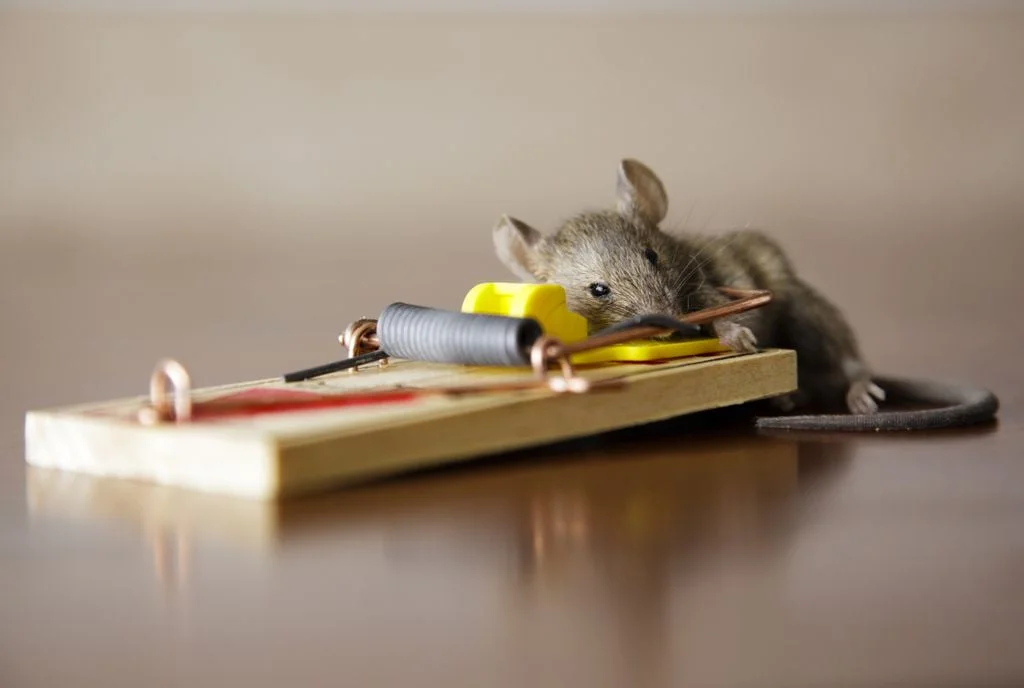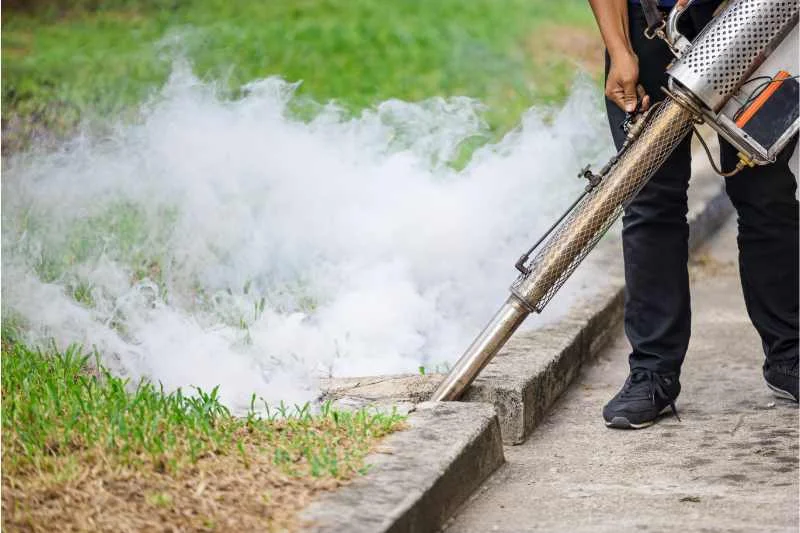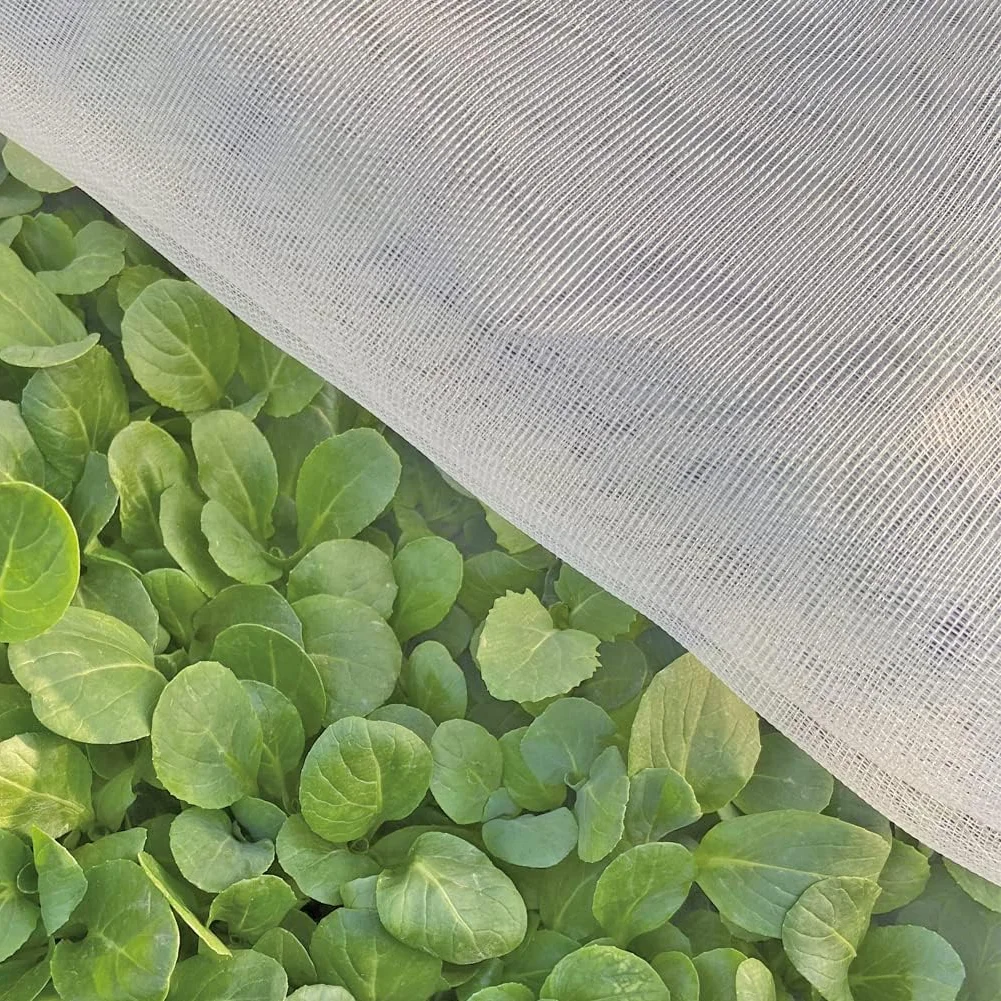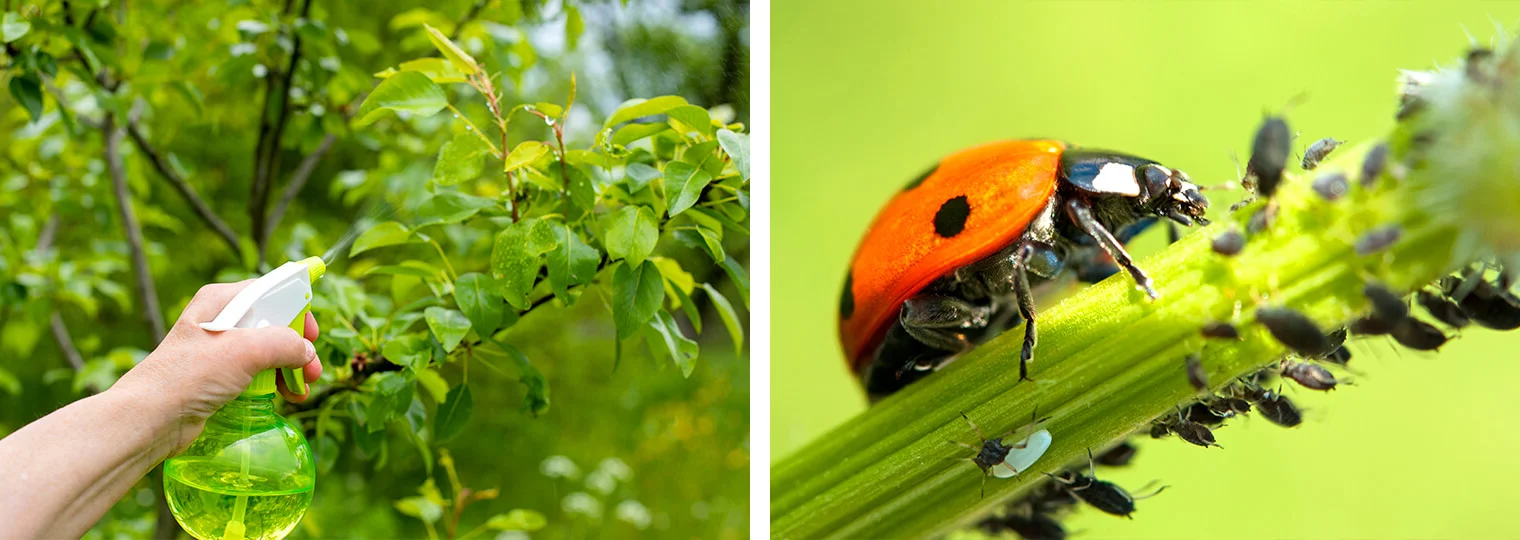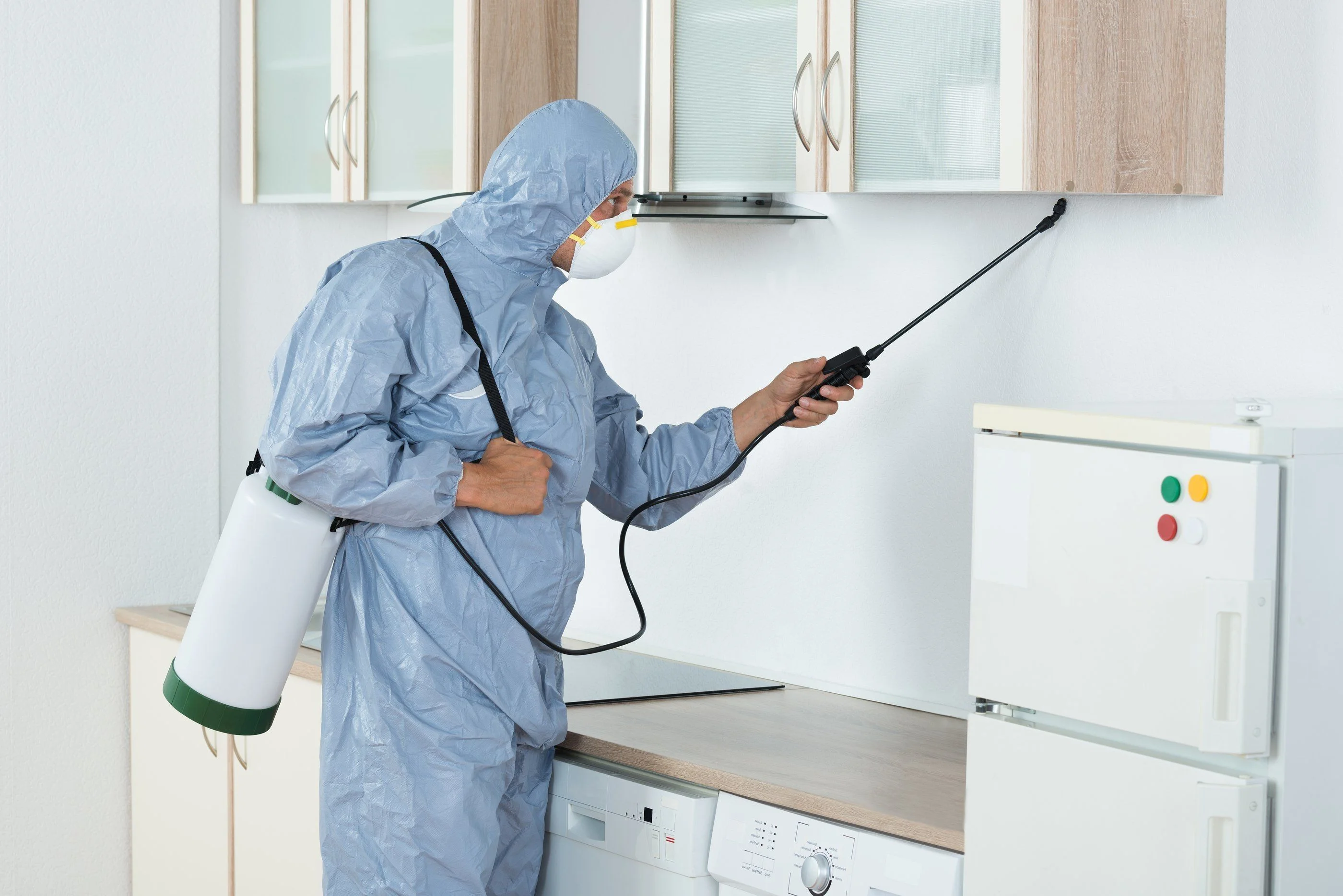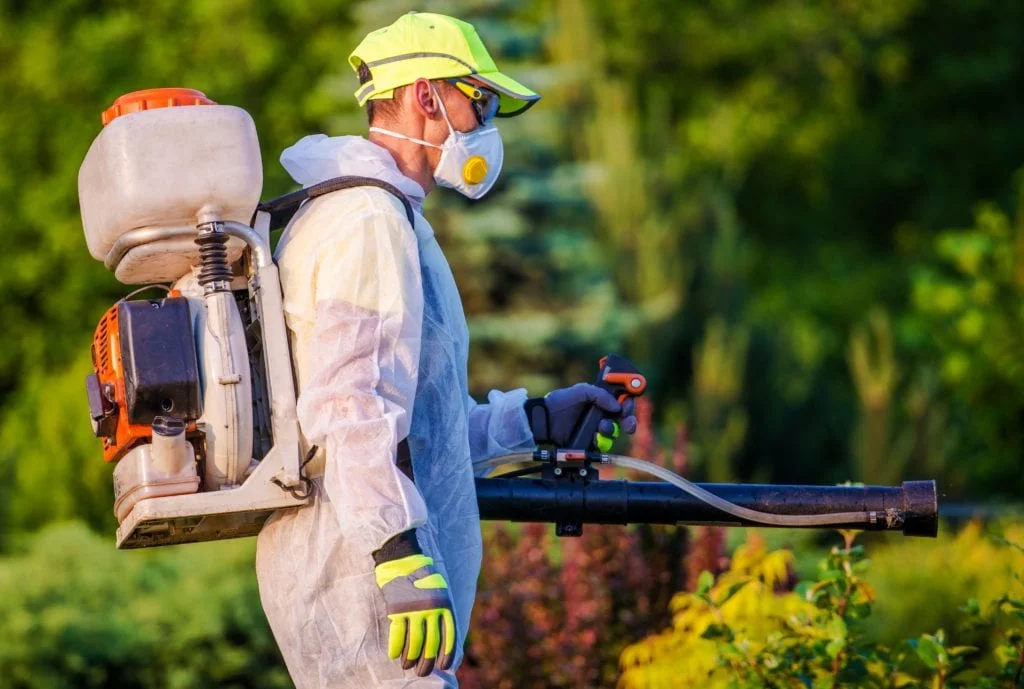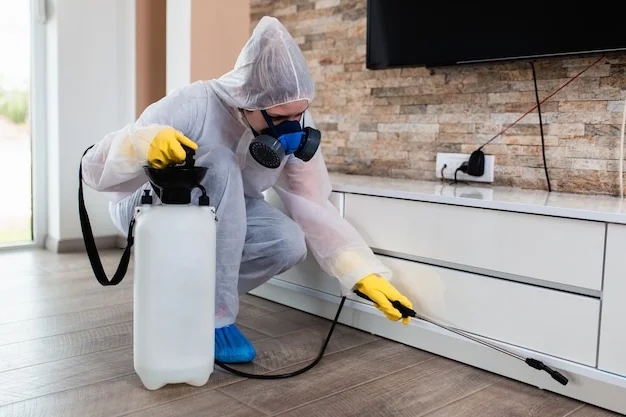From the urban density of Chicago to the fertile agricultural expanses of central Illinois and the forested southern regions, the Prairie State creates diverse pest environments that challenge homeowners and businesses year-round. Illinois' four-season climate—characterized by hot, humid summers and cold winters—provides ideal conditions for a wide variety of pests to thrive, with pronounced seasonal cycles and transition periods. Effective pest control in Illinois requires specialized knowledge of the state's regional ecosystems, urban-rural interfaces, and the unique challenges presented by both established neighborhoods and rapidly developing communities.
Properties throughout Illinois face ongoing pest pressures that threaten structural integrity, compromise health, impact agricultural productivity, and diminish quality of life for residents. Whether addressing rodent infestations in Chicago's historic neighborhoods, termite threats in Springfield's suburban developments, or persistent insect problems in southern Illinois' humid climate, local professional exterminators deliver targeted solutions based on decades of regional experience. This guide explores Illinois' most common pest challenges, innovative control approaches including eco-friendly pest solutions, and why the Prairie State's distinctive environmental conditions make professional expertise essential for effective management.
Dealing with persistent Illinois pests? Our Prairie State specialists offer
emergency pest control
24/7 and comprehensive
property inspections throughout Illinois.
Contact us today for prompt assistance!
Pest Control Challenges Specific to Illinois
Illinois' unique environment creates distinctive pest control challenges that require specialized approaches. Here's why pest management in the Prairie State demands expert attention:
-
Dramatic seasonal transitions Illinois experiences all four seasons intensely, with temperature swings exceeding 100 degrees annually. These pronounced seasonal shifts trigger predictable pest migration patterns, particularly during spring emergence and fall invasions when pests aggressively seek shelter in structures. Each seasonal transition requires precisely timed preventative measures to intercept pests before they establish.
-
Urban-rural interfaces Throughout Illinois, expanding suburban communities create extensive boundaries between developed areas and agricultural or natural landscapes. These transition zones experience unique pest pressures as displaced wildlife and insects from disturbed habitats seek new territory. Properties in these expanding areas often face the first waves of pest migration during development activities.
-
Abundant water features Illinois is defined by its waterways—from Lake Michigan to the Mississippi and Illinois Rivers and countless smaller streams and wetlands. These water features create moisture-rich environments that support mosquito breeding, foster termite activity, and attract water-seeking pests, particularly during summer months when humidity levels peak throughout the state.
-
Diverse architecture From Chicago's historic brownstones to mid-century suburban developments, rural farmhouses, and new construction, Illinois properties present varied structural challenges. Older urban buildings often feature complex wall voids and basement systems that harbor established pest populations, while newer construction can disturb existing pest habitats during development.
-
Agricultural influence Illinois' extensive agricultural operations affect pest dynamics even in residential settings. Seasonal farming activities can displace field rodents and insects toward structures, while harvests trigger predictable pest movements. Grain storage facilities in many communities create focal points for certain pest populations that can spread to surrounding properties.
Understanding these Illinois-specific challenges is crucial for effective pest management. Professional pest control services develop customized treatment strategies that address these regional factors, providing targeted protection for the Prairie State's distinct environmental conditions.
Common Pests in Illinois
Illinois' varied regions and four-season climate support numerous pest species that impact properties differently based on location, season, and surrounding environment. Here are the most common invaders that plague the Prairie State:
Rodents
Professional installation of rodent control systems at an Illinois home
Illinois properties face significant challenges from mice and rats, with Norway rats and house mice particularly prevalent in urban areas, while deer mice more commonly affect rural properties. Chicago's dense urban environment supports established rodent populations that have adapted to human activity, while suburban and rural areas experience seasonal rodent pressure intensifying during harvest and as temperatures drop in fall.
Effective rodent control begins with thorough property inspection to identify entry points, harborage areas, and patterns of activity. Professional management combines strategic exclusion work, targeted trapping programs, protected baiting methods where appropriate, and ongoing monitoring to prevent reinfestation. For Illinois' older urban buildings, specialized approaches address complex structural features that can harbor rodents, while newer properties benefit from preventative perimeter protection against seasonal invasion attempts.
Termites
Detailed termite inspection being conducted at an Illinois property
Eastern subterranean termites pose significant threats to Illinois properties, causing millions in damage annually across the state. The Prairie State falls within the moderate-to-heavy termite pressure zone, with activity particularly intense in the southern regions where slightly warmer temperatures support longer seasonal activity. Even northern Illinois communities experience substantial termite pressure, with Chicago's older neighborhoods facing established colony activity in many areas.
Professional termite inspection and treatment approaches combine thorough structural evaluation, soil treatment barriers, targeted colony elimination systems, and ongoing monitoring to protect properties from these destructive pests. For new construction, preventative measures during building stages provide long-term protection, while existing structures benefit from comprehensive treatment programs designed to eliminate active infestations and prevent future establishment.
Mosquitoes
Targeted mosquito treatment being applied in an Illinois residential yard
Illinois' abundant water features and humid summer climate create ideal breeding conditions for numerous mosquito species, making these biting pests a persistent seasonal nuisance throughout the state. Beyond the discomfort they cause, Illinois mosquitoes can transmit West Nile virus and other diseases, creating public health concerns during peak season, typically May through October in most regions.
Effective mosquito control combines environmental management to eliminate standing water, targeted larvicide treatments for water features that cannot be drained, and strategic adult mosquito treatments around landscape features and gathering areas. Professional services create customized treatment schedules based on property characteristics and regional mosquito patterns, allowing Illinois families to reclaim outdoor spaces during warm months when mosquito activity would otherwise restrict enjoyment.
Ants
Illinois properties contend with numerous ant species, with carpenter ants, odorous house ants, and pavement ants causing the most significant problems for homeowners and businesses. These persistent insects establish complex colony systems that can be difficult to eliminate without professional intervention. Carpenter ants present particular concerns in wooded areas where they can damage structural wood, while other species primarily create nuisance issues when foraging for food in kitchens and other indoor areas.
Professional ant control requires correct species identification, as different ants respond to various treatment and baiting approaches. Effective management combines targeted treatments, specialized baiting programs designed for specific ant species, and perimeter protection to prevent new colony establishment. For homes with persistent ant problems, comprehensive programs address both immediate activity and the environmental conditions that attract these pests to properties.
Overwintering Pests
Applying a preventative barrier treatment for overwintering pests on an Illinois home
Illinois' cold winters drive several insect species to seek shelter in structures during fall months, creating significant seasonal nuisance issues. Box elder bugs, brown marmorated stink bugs, Asian lady beetles, and cluster flies commonly invade homes and businesses as temperatures drop, congregating on sun-warmed exterior walls before finding entry points into attics, wall voids, and living spaces. Though not structurally damaging, these overwintering invaders emerge intermittently during warm periods throughout winter, creating ongoing nuisance situations.
Successful management of these seasonal pests requires precisely timed preventative treatments applied before invasion periods begin, typically in early fall before the first frost. Professional services combine exterior treatments of congregation areas, targeted applications to interception zones, and exclusion work to seal entry points. For properties with historical issues, comprehensive prevention programs provide reliable protection when implemented during the critical pre-invasion window.
Eco-Friendly Pest Control for Illinois Properties
Illinois' diverse natural resources—from Lake Michigan's watershed to the state's numerous river systems and natural areas—create strong demand for environmentally responsible pest management approaches. Modern eco-friendly pest solutions protect homes and businesses while minimizing environmental impact through targeted application methods, reduced-risk product selections, and integrated management strategies that address root causes of pest problems.
Professional services implement Integrated Pest Management (IPM) principles that prioritize inspection, exclusion, habitat modification, and biological controls when possible, reserving targeted chemical interventions as a last resort. This sustainable methodology particularly benefits families with young children, properties with pets, homes with organic gardens, and structures near environmentally sensitive areas like watersheds, conservation zones, or wildlife habitats.
Environmental Commitment
Illinois pest control specialists understand the importance of protecting the state's valuable natural resources, implementing management approaches that effectively address pest issues while respecting the Prairie State's environmental integrity.
Below is a comparison of different eco-friendly pest control methods highlighting their benefits for Illinois properties:
| Treatment Method |
Benefits |
Ideal Use in Illinois |
| Precision Targeting |
Applies minimal product amounts exactly where pests travel, harbor, or enter structures while leaving most areas untreated, dramatically reducing overall chemical usage.
|
Urban properties where minimizing environmental exposure is critical, homes with children and pets, and properties near Chicago's waterways or downstate conservation areas.
|
| Exclusion Methods |
Creates physical barriers preventing pest entry without any chemical use, providing sustainable long-term protection with zero environmental impact or ongoing maintenance needs.
|
Rodent prevention in urban properties, sealing against overwintering pest invasions, and addressing entry points for seasonal pests—particularly valuable for Illinois' pronounced seasonal transitions.
|
| Habitat Modification |
Alters environmental conditions that attract and support pest populations through landscape changes, moisture management, and sanitation improvements rather than chemical intervention.
|
Mosquito reduction through water management, rodent prevention through vegetation control and resource elimination, and termite deterrence through moisture reduction—especially important in Illinois' humid summer conditions.
|
| Botanical-Based Products |
Utilizes plant-derived active ingredients that provide effective control for certain pest issues while breaking down quickly in the environment with minimal residual impact.
|
Applications near Illinois' numerous waterways, urban gardens, and sensitive environments where traditional pesticides might pose concerns, particularly for mosquito management and certain perimeter treatments.
|
| Seasonal Prevention |
Focuses on preventing pest establishment through preemptive measures timed to seasonal cycles, reducing the need for reactive treatments and creating more sustainable long-term results.
|
Preventing overwintering pest invasions before they occur, establishing protective barriers before mosquito season intensifies, and implementing rodent exclusion before fall migration periods—working with Illinois' predictable seasonal patterns.
|
Residential & Commercial Pest Control Throughout Illinois
Residential Pest Protection
Illinois homes face diverse pest challenges influenced by location, architectural style, and surrounding environment. Residential pest protection programs are tailored to address the specific needs of different Illinois properties, from Chicago's urban condominiums and historic homes to suburban developments, small-town residences, and rural properties throughout the state.
Professional services offer customizable protection plans that address the state's most common household pests, with particular emphasis on preventing seasonal invaders, excluding rodents during colder months, and maintaining pest-free living environments year-round. Treatment schedules align with Illinois' distinct seasonal patterns, with increased attention during spring emergence periods, summer mosquito season, and fall invasion windows when pest pressure intensifies.
Commercial Pest Control
From restaurants in Chicago's vibrant districts to healthcare facilities in Springfield, warehousing operations in Joliet, food processing facilities throughout the state, and educational institutions in urban and rural communities, Illinois businesses require specialized pest management programs that protect operations, reputation, and regulatory compliance. Commercial pest control services address the distinct challenges of different industries with targeted protocols designed for each business type.
Professional commercial services provide comprehensive documentation to support audit requirements, discreet service scheduling that minimizes operational disruption, and emergency response capabilities for time-sensitive situations. Illinois' substantial food production, processing, and service industries particularly benefit from specialized programs designed to maintain the highest standards of sanitation and pest prevention while meeting stringent regulatory requirements.
From residential pest protection plans to customized
commercial pest control solutions, we have properties throughout Illinois covered –
schedule your service now and keep your
property pest-free year-round!
Why Choose Local Experts in Illinois?
When it comes to protecting your Illinois property from pests, working with local experts offers distinct advantages. A local pest control company understands the region's specific challenges and truly cares about the communities they serve. Here's why choosing local Illinois specialists makes a significant difference:
-
Knowledge of regional pest patterns Local technicians understand how Illinois' diverse regions—from the urban northeast to the central plains and southern woodlands—experience different pest pressures and seasonal cycles. This regional expertise allows for precisely targeted treatments and timing based on decades of local experience rather than generic approaches.
-
Experience with Illinois architecture Local experts are familiar with the distinctive construction methods found throughout the state, from Chicago's historic brownstones and brick bungalows to central Illinois' century farmhouses and contemporary suburban developments. This architectural knowledge helps identify vulnerable areas and implement effective protection strategies specifically suited to each property type.
-
Understanding of seasonal timing Illinois' pronounced seasonal transitions create predictable pest activity windows that vary across the state. Local professionals know exactly when different seasonal pests become active in specific regions, allowing for precisely timed preventative treatments before problems develop, rather than reacting after infestations establish.
-
Familiarity with local regulations Illinois communities maintain specific regulations regarding pesticide applications, wildlife management, and treatment methods, particularly in watershed protection areas and urban zones. Local pest professionals navigate these requirements daily, ensuring all services remain fully compliant with state and municipal ordinances.
-
Weather response capabilities Illinois' often unpredictable weather patterns—from summer storms to winter freezes—can impact treatment effectiveness and timing. Local teams maintain flexibility to adjust service schedules around weather events, ensuring optimal results while adapting to the Prairie State's sometimes challenging conditions.
By choosing local professional exterminators with deep knowledge of Illinois' specific pest challenges, property owners receive more effective, regionally-appropriate solutions than generic approaches used by those unfamiliar with the Prairie State's unique conditions.
Regional Pest Control Services Throughout Illinois
Different regions of Illinois face unique pest challenges based on urban density, surrounding environment, and climate variations. Professional pest control specialists understand these regional differences:
Chicagoland/Northeast Illinois
Including: Chicago, Suburbs, Rockford, Waukegan, Aurora, Naperville, Joliet
The densely populated northeastern region faces substantial urban pest pressures, with established rodent populations, cockroach issues in multi-unit buildings, and bed bug concerns requiring specialized urban pest strategies. The region's older infrastructure creates harborage opportunities in complex structural systems, while Lake Michigan's influence moderates temperatures slightly compared to inland areas. Chicago's extensive green spaces and waterways support mosquito populations during summer months, while the urban heat island effect can extend seasonal pest activity beyond what surrounding rural areas experience.
Central Illinois
Including: Springfield, Peoria, Bloomington, Champaign-Urbana, Decatur
This predominantly agricultural region experiences the full impact of Illinois' continental climate, with dramatic seasonal transitions driving pronounced pest behavior cycles. The extensive farming operations influence pest dynamics even in urban centers, with harvest activities often triggering rodent movements toward structures. Central Illinois communities contend with significant overwintering pest pressure during fall transitions, while the region's waterways and summer humidity support substantial mosquito populations. Termite activity increases in this region compared to northern areas due to slightly longer warm seasons.
Southern Illinois
Including: Carbondale, Marion, Mt. Vernon, Effingham, Edwardsville
The southernmost region experiences milder winters and longer warm seasons than the rest of the state, creating extended periods of pest activity for many species. Southern Illinois' greater forested areas and higher average humidity support different pest populations, with greater termite pressure and more diverse ant species than northern regions. The area's proximity to major rivers—including the Mississippi and Ohio—creates substantial mosquito breeding habitat, while the longer warm season allows more reproductive cycles for many pest species annually.
Western Illinois / Mississippi River Corridor
Including: Moline, Rock Island, Quincy, Galesburg, Alton
Communities along the Mississippi River face unique pest challenges influenced by the waterway's ecosystem. The river corridor creates moisture conditions that support significant mosquito activity, while the transportation infrastructure along this major shipping route occasionally introduces non-native pest species. The region's mix of industrial areas, established neighborhoods, and rural properties creates varied pest management needs, with river communities experiencing some different seasonal patterns than inland areas due to the river's moderating effect on local climate.
Top Cities for Pest Control in Illinois
Professional pest control services are available throughout the Prairie State. Below are some of the major Illinois cities where quality pest management is especially important:
Chicago
America's third-largest city presents unique pest management challenges across its diverse neighborhoods and architectural styles. Chicago's dense urban environment supports established rodent populations, particularly Norway rats, that have adapted to human activity patterns. The city's older buildings—many dating back a century or more—feature complex wall void systems, basement areas, and infrastructure that can harbor pests for generations. Chicago's position along Lake Michigan influences local climate patterns, while the urban heat island effect can extend seasonal pest activity beyond what surrounding areas experience. The city's extensive park system and waterways create green corridors that support wildlife and insect activity even in heavily developed areas, while the diverse international shipping and transportation networks occasionally introduce non-native pest species.
Springfield
Illinois' capital city exemplifies the pest challenges faced in the state's central region. Springfield's mix of historic government buildings, established residential neighborhoods, and suburban expansion areas creates varied pest management needs. The city experiences the full impact of Illinois' continental climate, with dramatic seasonal transitions driving pronounced pest behavior cycles, particularly during spring emergence and fall invasions. Springfield's position amidst agricultural operations influences urban pest dynamics, with harvest activities often triggering rodent movements toward structures. The city's mature tree canopy supports significant populations of overwintering pests that seek shelter in buildings during fall, while the area's watershed features contribute to mosquito pressure during warmer months.
Illinois Service Coverage Map
Seasonal Pest Guide for Illinois
Spring (March-May)
- Termite swarms emerge
- Ant colonies become active
- Overwintering pests exit hibernation
- Mosquito breeding begins as temperatures warm
Recommendation: Implement perimeter treatments as temperatures consistently rise above 50°F and schedule annual termite inspections during this critical emergence period.
Summer (June-August)
- Mosquito activity reaches peak levels
- Ant infestations become more visible
- Stinging insect colonies expand rapidly
- Cockroach activity increases with humidity
Recommendation: Maintain regular mosquito treatments, monitor for wasp nest establishment, and reinforce barriers against summer-active pests.
Fall (September-November)
- Rodents begin seeking indoor shelter
- Overwintering insects invade structures
- Spider activity increases indoors
- Final stinging insect surge before winter
Recommendation: Critical window for applying preventative treatments against overwintering pests and implementing rodent exclusion before winter.
Winter (December-February)
- Rodent activity concentrates indoors
- Occasional warm days activate overwintering insects
- Indoor pest issues become more noticeable
- Preparation for spring pest emergence
Recommendation: Focus on interior pest management and exclusion improvements during Illinois' cold winter months.
Illinois' pronounced seasonal cycle creates predictable patterns of pest activity, with each season presenting different challenges requiring specific preventative approaches. Professional pest control services adjust their strategies throughout the year to address these seasonal patterns, providing ongoing protection during critical transition periods when pest pressure intensifies.
What Our Illinois Clients Say
"As homeowners in Chicago's North Side, we struggled with seasonal rodent issues for years before finding this service. Their comprehensive exclusion work and quarterly maintenance program have kept our vintage building completely rodent-free for two years running."
- Michael & Jennifer T., Chicago
★★★★★
"Running a restaurant in Springfield means pest prevention isn't optional—it's essential for our reputation and compliance. Their commercial program provides thorough coverage with discreet service that doesn't disrupt our busy operation. Their documentation also makes health inspections a breeze."
- David L., Springfield
★★★★★
"After struggling with mosquitoes making our backyard unusable every summer, we finally found a solution that works. Their seasonal mosquito program has transformed our outdoor living experience in Naperville, allowing our family to enjoy evenings outside without being driven indoors."
- Sarah M., Naperville
★★★★★
Frequently Asked Questions
How does Illinois' seasonal cycle affect pest control strategies?
Illinois experiences all four seasons distinctly, creating pronounced pest behavior cycles that require seasonally-adjusted approaches. Spring (typically March-May) brings termite swarms and ant colony emergence, requiring preventative perimeter treatments as temperatures consistently exceed 50°F. Summer (June-August) intensifies mosquito activity and stinging insect colony development, necessitating targeted treatments for outdoor comfort. Fall (September-October) triggers critical prevention windows as overwintering pests seek shelter and rodents move indoors—this period requires precisely timed applications before first frost. Winter (November-February) shifts focus to interior management and exclusion maintenance when exterior pest activity diminishes. Our service programs align with these seasonal patterns, adjusting treatment methods, target pests, and application timing based on decades of regional experience with Illinois' climate cycle.
What makes Chicago's pest challenges different from other parts of Illinois?
Chicago presents unique pest management challenges due to several factors distinct from other Illinois regions. The city's dense urban environment supports established rodent populations that have adapted specifically to urban resources and harborage areas. Chicago's aging infrastructure—with many buildings dating back 100+ years—creates complex structural systems where pests can establish protected harborage areas difficult to access. The urban heat island effect extends seasonal pest activity beyond what surrounding rural areas experience, particularly noticeable during spring and fall transitions. Lake Michigan's influence moderates temperature extremes slightly while contributing to humidity levels that support certain moisture-dependent pests. Finally, Chicago's position as a transportation hub occasionally introduces non-native pest species through shipping and logistics networks. Our Chicago-specific protocols address these unique urban challenges with specialized inspection methods, treatment approaches, and monitoring systems designed for the complexities of metropolitan pest management.
Are your treatments safe for families, pets, and Illinois' waterways?
Absolutely. Our Illinois technicians receive extensive training in modern, environmentally responsible pest management approaches that effectively control pests while minimizing impact on non-target organisms. We utilize several key strategies to ensure safety: precision targeting that places products only where pests travel or harbor (leaving most areas untreated), establishing buffer zones around sensitive areas like play equipment and pet spaces, selecting products that break down rapidly in the environment, and emphasizing non-chemical control methods wherever possible. For properties near Illinois' abundant waterways—including Lake Michigan, the Mississippi and Illinois Rivers, and local watersheds—we implement additional precautions including specialized application methods and product selections designed specifically to protect water quality. Our service protocols comply with all Illinois environmental regulations and watershed protection guidelines while still providing effective pest management for your property.
How should Illinois homeowners prepare for fall pest invasions?
Fall represents a critical prevention window for Illinois homeowners as cooling temperatures trigger significant pest migrations toward structures. We recommend a comprehensive approach beginning in late August to early September—before the first frost but as temperatures begin noticeably cooling. Start with a thorough exterior inspection focusing on potential entry points: seal gaps around utility penetrations, repair damaged door sweeps and weather stripping, install mesh over vents, and address foundation cracks. Reduce harborage areas by moving firewood away from structures, trimming vegetation from exterior walls, cleaning gutters, and eliminating leaf accumulation around foundations. For overwintering insects like box elder bugs and stink bugs that congregate on sunny exterior walls, professional preventative treatments applied to these gathering areas and potential entry zones provide significant protection when timed correctly. Finally, for rodent prevention, consider professional exclusion services that identify and seal potential entry points before mice and rats begin seeking winter shelter. Taking these steps during the critical late summer/early fall window provides much better protection than reacting after pests have already established indoor populations.

